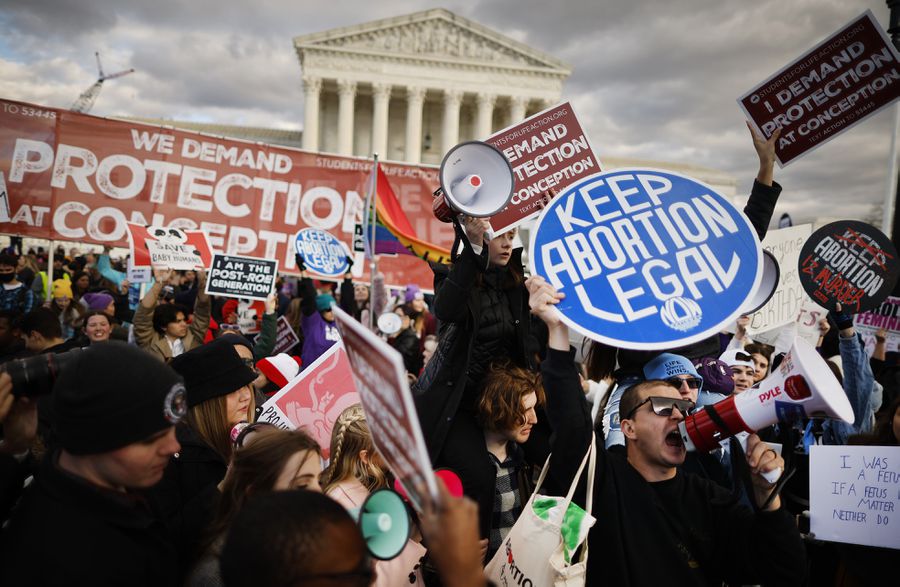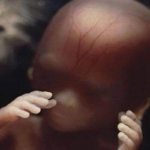Abortion, American Politics
And the Baby Waves Back: The Story of Abortion in America
By Jonathon Van Maren
The Story of Abortion in America: A Street-Level History, 1652–2022, by Marvin Olasky and Leah Savas, Crossway, 512 pages.
From the colonial days to the Dobbs decision, Olasky and Savas weave a narrative of abortion from scores of stories from the street. There, we discover, abortion is not a lofty matter of women’s rights and vague euphemisms. It is a tool of predatory men, a story of cracked bones and tiny corpses. This essential history debunks many long-held myths that have deformed the debate that has shaped American politics.
One central myth is that the pro-life laws that swept America in the 1860s were a victory of religious dogma over science. In fact, it was theologians who got the facts wrong, with their limited knowledge of embryology. It was doctors who realized that life began not at “quickening” but at conception and lobbied for legal protection for human beings at the earliest stages of life. The book also points out that, contrary to popular belief, the abortion rate was negligible in Colonial America and low in most places later on, and by the time Roe arrived, advances in medicine had drastically reduced abortion-related maternal mortality.
In the early chapters, desperate women of centuries past come into focus, resurrected from court documents and press reports. In almost every instance, women pregnant out of wedlock were portrayed in the press as women wronged. Enormous social pressure was exerted to force reluctant men to “do the right thing” and marry the mother of his child. When an abortion did occur, the law usually came down on the errant father rather than the mother. Women in early America were understood to have turned to abortion only in desperate circumstances—as Frederica Matthews-Greene put it, “like an animal caught in a trap wants to gnaw off its own leg.”
Women killed by abortionists were portrayed universally as victims in the press. These crime stories often captivated the American public, and the victims of botched abortions were always portrayed as beautiful and hard done by. In 1879, young Jennie Clark was found crammed in a trunk floating down a river north of Boston. She was described by the New York Sun as “a woman of unusual personal attractions.” With dramatic flourish, newspapers relished referring to the beauty of young victims as a “fatal gift.”
The abortionists, by contrast, were butchers. Lucy Hagenow, who began her career in 1880s San Francisco, was reported by the Lincoln Star to have “caused the death of 1,000 infants and mothers” and ended her career with 75 arrests, 8 trials, and 3 convictions. A story told at one trial came from an undertaker who had difficulty getting a young woman’s corpse down the stairs at her residence and was told by Hagenow that the regular undertaker usually had no trouble. Ruth Barnett performed 40,000 abortions in Portland—including six of her own grandchildren—and made $100 million in today’s money. She took to wearing fur coats and diamonds.
The most infamous was Anne Lohman, the wife of New York Herald publisher Charles Lohman. She was known as Madame Restell and built an abortion empire killing the unborn children of New York City’s rich and famous, protected by an almost impenetrable web of bribery and blackmail. She resided in a Fifth Avenue mansion with a grand hall, three dining rooms, three floors of bedrooms, and a fifth-floor billiards room and dance hall. She killed babies from 1838 to 1878 and turned the knife on herself when the law finally came for her.
Opposing them was America’s pro-life movement, which is still the largest in the world today. New York governor Robert Hunter pushed the very first pro-life law in 1716, prompting other colonies to follow suit. Hugh Hodge, brother of the prominent theologian Charles Hodge, called for protections against abortion in a lecture in 1839 later published under the title Foeticide. Dr. Horatio Storer from 1857 waged a heroic educational campaign on the humanity of the unborn.
When abortion battles began to sweep the U.S. in the 1960s—a process abruptly ended by Roe v. Wade in 1973—it was mostly Catholics who manned the movement until Protestant leaders such as Francis Schaeffer rallied the evangelicals. Activists of all faiths merged in the campaigns of Operation Rescue, which resulted in 70,000 arrests outside of abortion clinics and ranks as the greatest civil disobedience movement in American history. Decades of tireless labor paid off on June 24, 2022, when the Dobbs decision overturned Roe and sent the fight back to the states once again.
It is a morbid irony that the primary characters in this drama are usually ignored and unseen—the unborn children at the center of the issue but the fringes of the story. Millions have been killed by American abortionists, and yet we see them only in glimpses. In 1845, the National Police Gazette described one of Madame Restell’s victims briefly surviving; the child “kicked several times before it was put into the bowl.” A little boy taken from the beheaded corpse of Pearl Bryan, an Indiana girl butchered by her lover in 1896 after she refused to submit to an abortion, was placed in a jar of preservative and put on the counter at a drugstore, where people flocked to see him.
Four or five hundred children were found buried in 1883 in the basement of Philadelphia abortionist Isaac Hathaway, where a detective found tiny skulls, ribs, and leg bones that rattled in a cigar box like “hard withered leaves”—those he hadn’t burned in his stove or fed to his dogs. In 1978 the Chicago Sun-Times described a woman hemorrhaging during an abortion and then giving birth “to a baby girl—apparently normal except the infant is missing a piece of scalp about the size of a 50-cent piece.”
READ THE REST OF THIS COLUMN HERE








